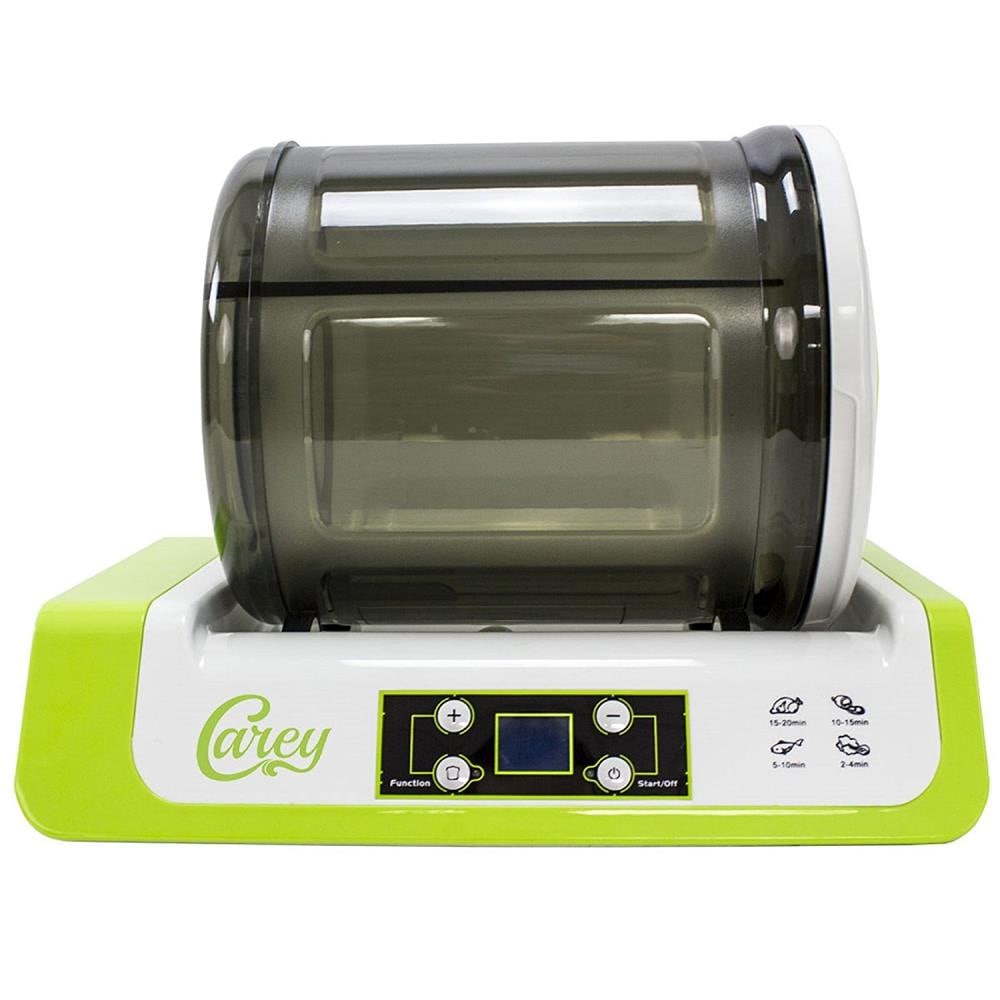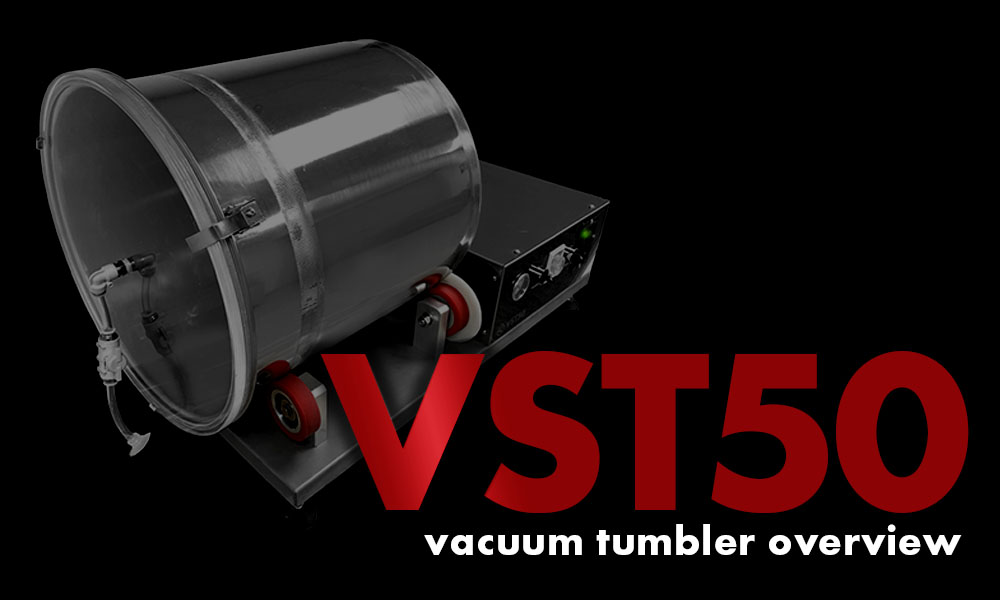10 years of experience as a food machinery equipment manufacturer
10 years of experience as a food machinery equipment manufacturer
Marination is a time-honored culinary technique used to enhance the flavor and tenderness of meats, poultry, and seafood. Traditionally, this process involves soaking food items in a seasoned liquid for extended periods. However, advancements in food processing technology have introduced more efficient methods, among which the tumbling vacuum meat marinator stands out as a significant innovation.

A tumbling vacuum meat marinator is a specialized piece of equipment designed to accelerate and optimize the marination process. It combines two primary actions: mechanical tumbling and vacuum application. The core of the machine typically consists of a sealed drum, often made of stainless steel, into which the meat and marinade are placed. This drum is then subjected to a vacuum environment while simultaneously being rotated or tumbled.
The synergy of these two processes is key. The vacuum removes air from the drum and, more importantly, from the pores and intercellular spaces within the meat itself. This expansion of the meat’s structure allows the marinade to penetrate more deeply and rapidly. The tumbling action then ensures that every surface of the meat is consistently exposed to the marinade and also provides a gentle massaging effect, which can help to break down tougher muscle fibers, further aiding tenderness and marinade absorption.
Tumbling vacuum meat marinators share core features that contribute to their effectiveness, though models vary in scale and sophistication.
The Vacuum System: A vital component, the vacuum pump evacuates air from the sealed marinating drum. This low-pressure environment causes muscle fibers in the meat to expand, creating pathways for quicker and deeper marinade penetration. Reduced oxygen also inhibits aerobic bacterial growth. Control over vacuum levels is often available for fine-tuning the process based on the product.
The Tumbling Mechanism: The drum’s rotation, often aided by internal baffles or flights, ensures continuous movement of the meat. This action provides a gentle massaging effect, evenly distributing the marinade and helping to break down tougher muscle fibers for improved tenderness. Adjustable rotation speeds and intermittent tumbling programs allow customization for different meat types and textures.
Construction and Materials: Most units, particularly commercial-grade ones, are constructed from food-grade stainless steel, such as type 304 or 316. This material offers durability, resistance to corrosive marinades, and is crucial for maintaining hygiene through easy cleaning and sanitization protocols.
Control Systems: Many marinators feature control panels, ranging from simple dials to sophisticated programmable logic controllers (PLCs). These systems allow for precise setting of timers for vacuum and tumbling phases, adjustment of vacuum pressure, and tumbling speed. Programmable cycles enable users to store and replicate specific marination processes, ensuring product consistency.
Capacity and Design: Machines vary widely in capacity, from small countertop models suitable for home enthusiasts or light commercial use (e.g., 20-50 lbs), to large industrial units capable of processing thousands of pounds of meat per batch. Designs often prioritize ergonomic loading and unloading, as well as safety features like lid interlocks.
Utilizing a tumbling vacuum meat marinator brings several key advantages over traditional static marination, benefiting both commercial operations and dedicated home users seeking professional results.
Tumbling vacuum meat marinators are versatile tools with practical applications in various segments of the food industry, as well as for the serious home cook.

Commercial Food Service: Restaurants, catering businesses, and institutional food services benefit greatly from the speed, consistency, and quality improvements. These machines enable chefs to prepare signature marinated dishes on shorter notice, ensure uniform product across all servings, and optimize ingredient usage. Establishments specializing in grilled, smoked, or roasted meats, such as barbecue joints or steakhouses, find them particularly invaluable.
Butcher Shops and Delicatessens: Progressive butcher shops and delis use tumbling vacuum marinators to create a range of value-added products, such as pre-marinated steaks, chicken pieces, pork loins, or kabobs. This not only offers convenience to their customers but also allows these businesses to differentiate their offerings and potentially command higher margins.
Food Processing and Manufacturing: In larger-scale food processing plants, these marinators are essential for efficiently producing consistent, high-quality marinated meat products for retail sale or for supply to other food businesses. They are integral in the production of items like seasoned jerky, deli meats, marinated chicken wings, and components for ready-to-cook meals.
Advanced Home Cooking and Small-Scale Production: Smaller, countertop versions of these machines cater to culinary enthusiasts who are serious about achieving professional-level results in their home kitchens. They are also suitable for small-scale artisanal producers. These units are ideal for individuals who enjoy experimenting with unique flavor profiles, preparing large batches for events, or for those who practice techniques like sous-vide cooking, where optimally marinated meat is crucial.
Choosing an appropriate tumbling vacuum meat marinator requires careful evaluation of several factors to ensure the selected model effectively meets specific operational and qualitative needs.
The tumbling vacuum meat marinator represents a sophisticated evolution in food preparation technology, effectively addressing many of the inherent limitations and time constraints associated with traditional static marination methods. By ingeniously combining controlled mechanical action with a sub-atmospheric pressure environment, these machines offer a scientifically-backed pathway to significantly improved operational efficiency, enhanced product quality, and greater consistency in flavor development and textural modification.
For culinary professionals working in diverse settings such as restaurants, butcheries, and large-scale food processing facilities, such equipment can translate into tangible operational advantages, superior product offerings, and potential cost savings. Similarly, for the dedicated home cook or small-scale artisan producer, more accessible models provide access to advanced marination techniques that can elevate home-prepared or specialty meals to a new echelon of quality. The careful selection of a tumbling vacuum marinator, based on a thorough assessment of specific needs and intended applications, ensures that the multifaceted benefits of this technology can be fully realized, making it a valuable and transformative asset in any context focused on producing high-quality, flavorful marinated foods.
